Oct 24, 17 · Remember is, as expected from the title, a solemn lament which is a farewell sonnet to her treasured one How Do I Love Thee?It is an emotion so it can be perceived in many different ways Shakespeare has infamously used sonnets to express his ideas on love 'Shall I compare thee?I love thee to the depth and breadth and height My soul can reach, when feeling out of sight For the ends of being and ideal grace I love thee to the level of every day's Most quiet need, by sun and candlelight I love thee freely, as men strive for right I love thee
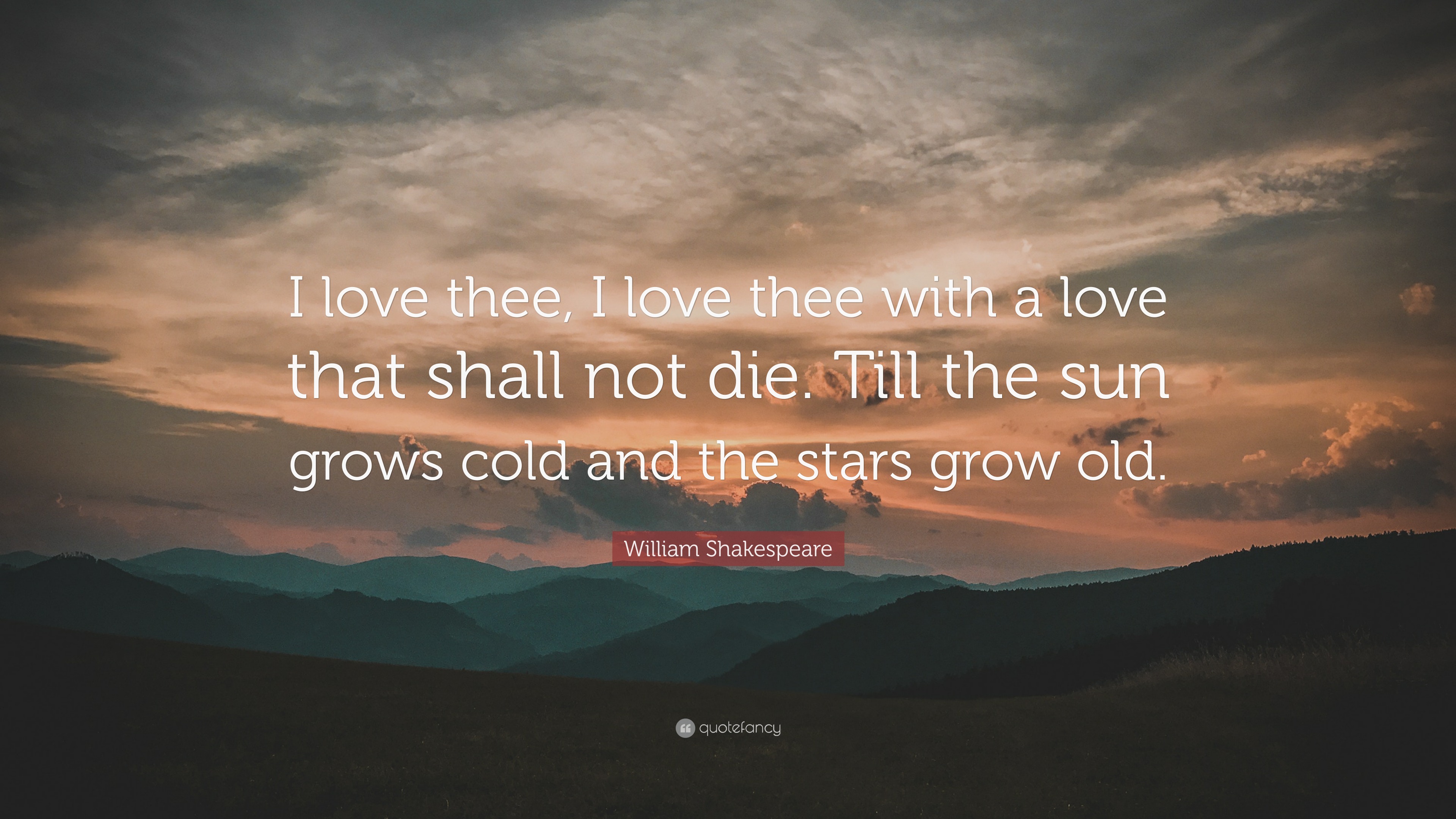
William Shakespeare Quote I Love Thee I Love Thee With A Love That Shall Not Die
Shakespeare how do i love thee let me count the ways
Shakespeare how do i love thee let me count the ways-And every fair from fair sometime declines,By William Shakespeare Shall I compare thee to a summer's day?
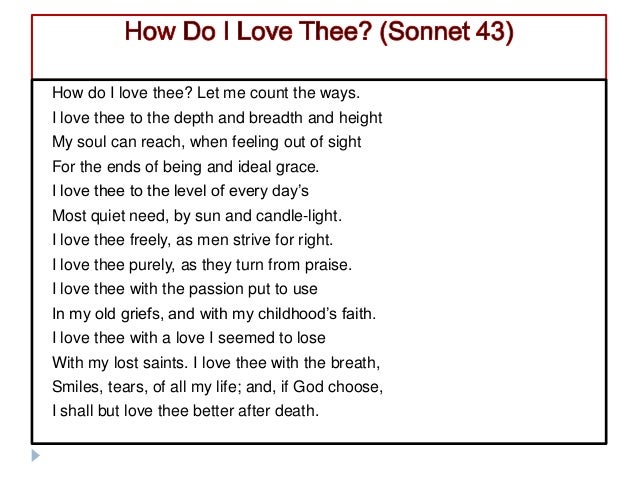



Sonnet 43 How Do I Love Thee By Elizabeth Barrette Browning
Let me count the ways" is one of the most famous love poems in the English language Because it's so famous, many readers mistakenly attribute the poem to that master sonneteer, William Shakespeare However, "How do I love thee?" was written centuries after Shakespeare – in fact, it's only been around for a little over 150 yearsA commentary on Shakespeare's 87th sonnet 'Farewell!And when I love thee not, chaos is come again" It ends up in angelic Desdemona's death by Othello In contrast to this, the play also shows the like of love of
I love thee to the level of every day's (a) Most quiet need, by sun and candlelight (b) I love thee freely, as men strive for right;' is a sonnet in which Shakespeare focuses on immortalisation through wordsMar 21, · Q What are the different figures of speech used in the poem 'Ho Do I Love Thee'?
Let me count the ways I love thee to the depth and breadth and height My soul can reach, when feeling out of sight For the ends of being and ideal grace I love thee to the level of every day's Most quiet need, by sun and candlelight I love thee freely, as men strive for right I love thee purely, as they turn from praiseFeb 09, 19 · Yep, love that sounds about right I would say that one of the driving forces or themes behind Browning's sonnet is that love can be redescribed in a variety of waysSep 07, 04 · Sonnet 43, also known as "How Do I Love Thee" is a literary classic written by Elizabeth Barrett Browning in 1850This poem follows a Petrarch sonnet structure, even though she lived closer to Shakespear's time This poem explores all the ways the author loves someone, it even goes through almost all stages of life Her love is talked about on an everyday level, as well




How Do I Love Thee Scheidies Carolyn R Amazon Com Books




From Published Poetry
Let me count the ways) Poem TextLet me count the ways I love thee to the depth and breadth and height My soul can reach, when feeling out of sight For the ends of being and ideal grace I love thee to the level of every day's Most quiet need, by sun and candlelight I love thee freely, as men strive for right I love thee purely, as they turn from praiseJun 16, 21 · Quill in hand, Jon O'Brien delivers the first line of the play Shakespeare in Love "Shall I compare thee Shall I compare" O'Brien is playing William Shakespeare, and he's supposed to struggle with that line, which he'll struggle with again when Kentucky Shakespeare Festival opens Shakespeare in Love (June 16July 31), their first play in
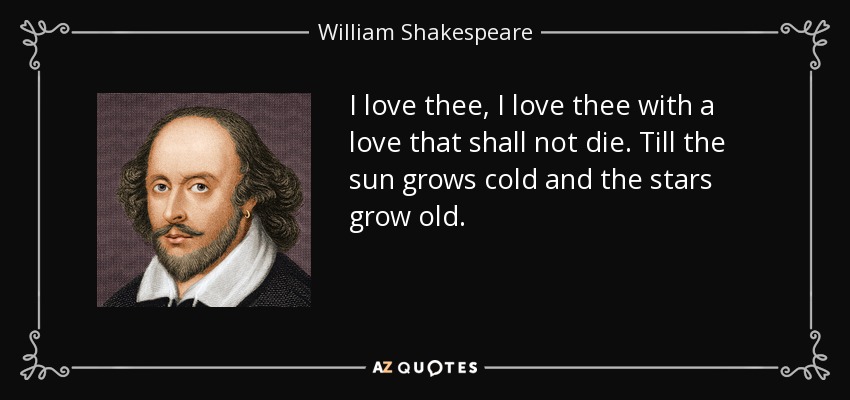



William Shakespeare Quote I Love Thee I Love Thee With A Love That




Sonnet 43 Sonnet 116 Elizabeth Barret Browning William Shakespeare Ppt Download
Sonnet 116, by William Shakespeare Let me not to the marriage of true minds admit impediments Love is not love which alters when it alteration finds, or bends with the remover to remove Oh, no!How Do I Love Thee – Elizabeth Barrett Browning interprets the meaning, tone, and overall effect of a poem How Do I Love Thee by Elizabeth Barret Browning is an iconic and powerful love poem The work is part of Sonnets from the Portuguese, a collection of poems that Elizabeth Browning wrote for her husband, poet Robert BrowningJealousy is shown here as a strong byproduct of a strong love Othello's devotion to Desdemona is supreme too but it is vulnerable and imprudent He says, "I do love thee!



Legendinc Com S Greatest Love Poems Of All Time




Love Quotes By Shakespeare Quotesgram
May 04, 17 · I love thee freely, as men strive for right I love thee purely, as they turn from praise I love thee with the passion put to use In my old griefs, and with my childhood's faith I love thee with a love I seemed to lose With my lost saints I love thee with the breath, Smiles, tears, of all my life;How do I love thee?I love thee purely, as they turn from Praise
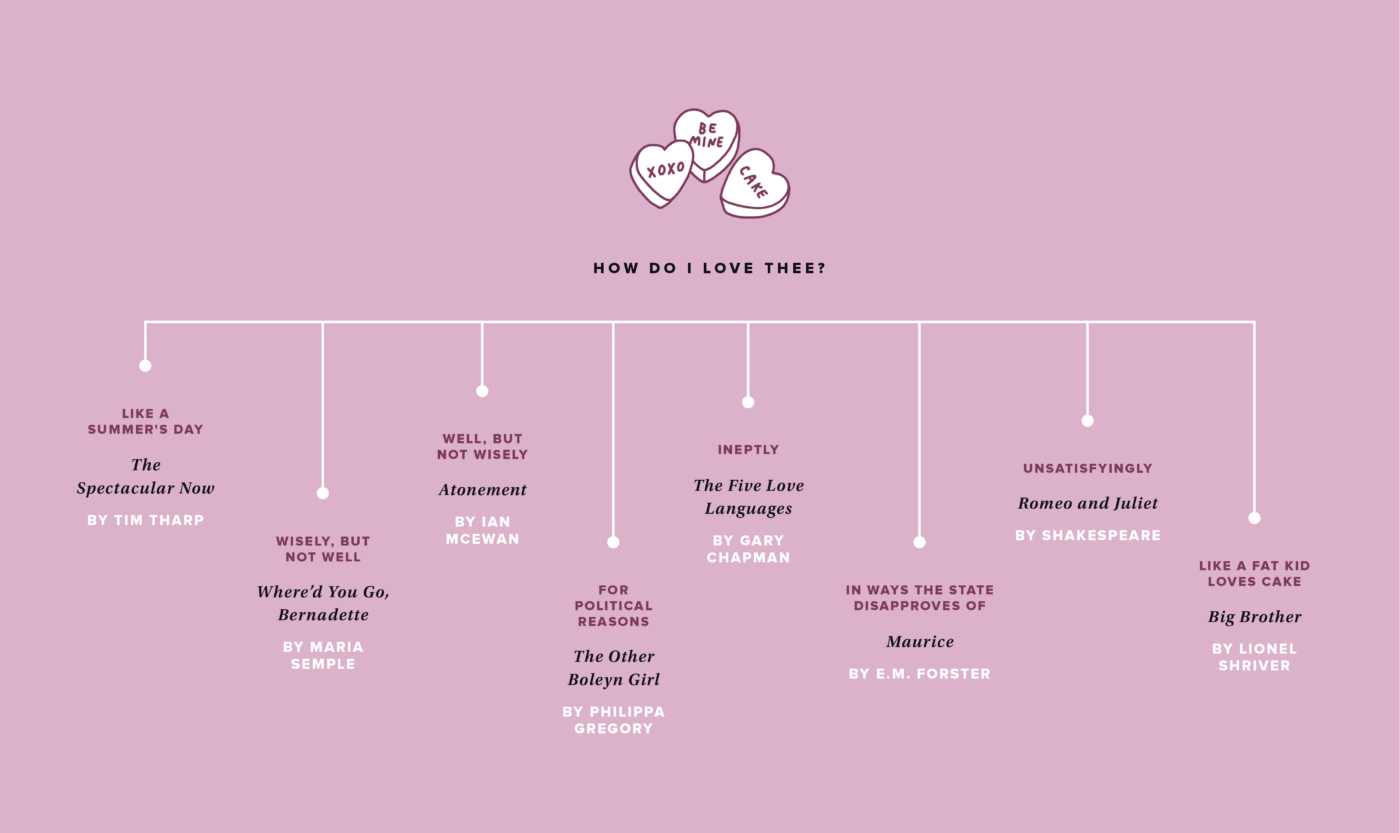



To Read How Do I Love Thee Warby Parker




How Do I Love Thee Let Me Count The Ways Sonnets From The Portuguese 43 Poem Summary And Analysis Litcharts
I love thee freely, as men strive for right I love thee purely, as they turn from praise I love thee with the passion put to use In my old griefs, and with my childhood's faith I love thee with a love I seemed to lose With my lost saints I love thee with the breath, Smiles, tears, of all my life;I love thee to the depth and breadth and height My soul can reach, when feeling out of sight For the ends of Being and ideal Grace I love thee to the level of everyday's Most quiet need, by sun and candlelight I love thee freely, as men strive for Right;Thou art too dear for my possessing' Nobody could accuse Sonnet 87 of failing to begin dramatically One of the more famous sonnets in Shakespeare's sequence of 154 poems about love, sex, desire, wigs (see Sonnet 68), and rivalry, Sonnet 87 is also one of the great English




Sonnet 43 How Do I Love Thee By Elizabeth Barrette Browning




Top 71 Love Thee Shakespeare Quotes Sayings
Jan 08, 18 · The poem, 'How do I love thee' is an iambic pentameter poem, starting with an unaccented syllable, and then an accented syllable This is also a lyric poem as it contains a lot of emotion, sparks the readers imagination, and has a melody like that of an epigram or hymnSep 27, 18 · "Love all, trust a few, Do wrong to none" (All's Well that Ends Well, Act 1, scene i) "I know no ways to mince it in love, but directly to say, 'I love you'" (Henry V, Act V, scene ii) "I do love you more than words can wield the matter" (King Lear, ActHow Do I Love Thee Rhyme Scheme Analysis They will love their significant other , no matter what You can tell this by the lines , "I love thee with the breath,/Smiles, tears, of all my life;",(Line 1213) She will love them with all her life Another line that supports this is "if God choose,/I shall but love thee better after death" (Lines 1214)
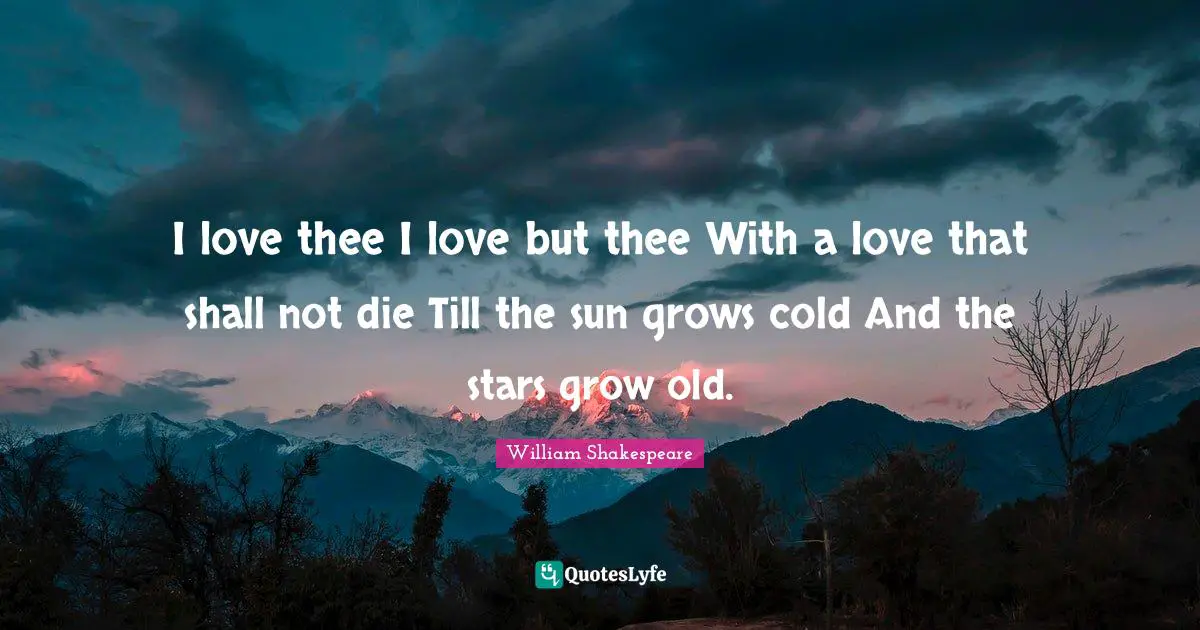



I Love Thee I Love But Thee With A Love That Shall Not Die Till The Su Quote By William Shakespeare Quoteslyfe
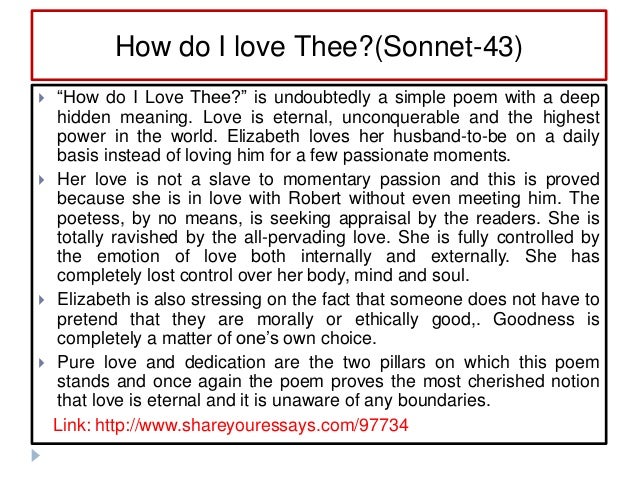



Sonnet 43 How Do I Love Thee By Elizabeth Barrette Browning
Sep 07, 04 · Shakespeare's, however, is the love of agape It is the love one feels for his family, and friends In dealing with the theme of love, both poems reference the beauty of their emotions, and the everlasting nature of such beauty Barrett's "How Do I Love Thee" follows the structure of a Petrarchan sonnet, and is therefore written in iambicMore Shakespeare Sonnets Sonnet 29 "When in disgrace with fortune and men's eyes" Sonnet 130 "My mistress' eyes are nothing like the sun" Sonnet 55 "Not marble nor the gilded monuments" Sonnet 105 "Let not my love be called idolatry" Sonnet 1 "From fairest creatures we desire increase"The Sun Rising, To His Coy Mistress, Sonnet, Sonnet 138, Sonnet Words 948 Pages 4;
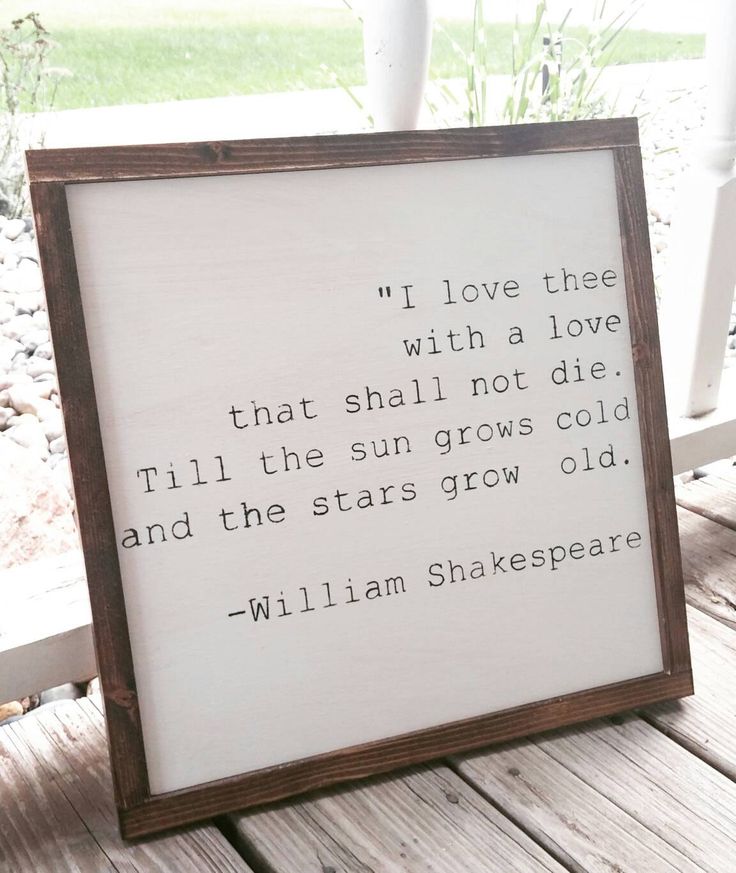



Love Quotes For Wedding I Love Thee William Shakespeare Quote Book Quote Rustic Wood Sign With Woo Quotes Time Extensive Collection Of Famous Quotes By Authors Celebrities Newsmakers More




Do I Love Thee Let Me Count Poems For Lovers By Sara Teasdale William Shakespeare Edgar Masters Audiobook Audible Com
How do I love thee?Types of sonnets, Shakespearean and Petrarchan Words 2919 Pages 11;I love thee purely, as they turn from praise I love thee with the passion put to use




How Do I Love Thee By Rabell Laura



Analysis Of Sonnet 43 How Do I Love Thee By Elizabeth Barrett Browning Gcse English Marked By Teachers Com
Thou art more lovely and more temperate Rough winds do shake the darling buds of May, And summer's lease hath all too short a date;It does not end on a couplet like most other Shakespeare sonnets Similarity in form to Shakespearean sonnet Smiles, tears, of all my life!— and, if God choose, I shall but love thee better after death Browning ends the poem with a couplet that reflects the traditional Shakespearean sonnet that concludes the poem by creating one last thought that causes the audience to see theLet me count the ways) study guide contains a biography of Elizabeth Browning, literature essays, quiz questions, major themes, characters, and a full summary and analysis About Sonnet 43 (How do I love thee?
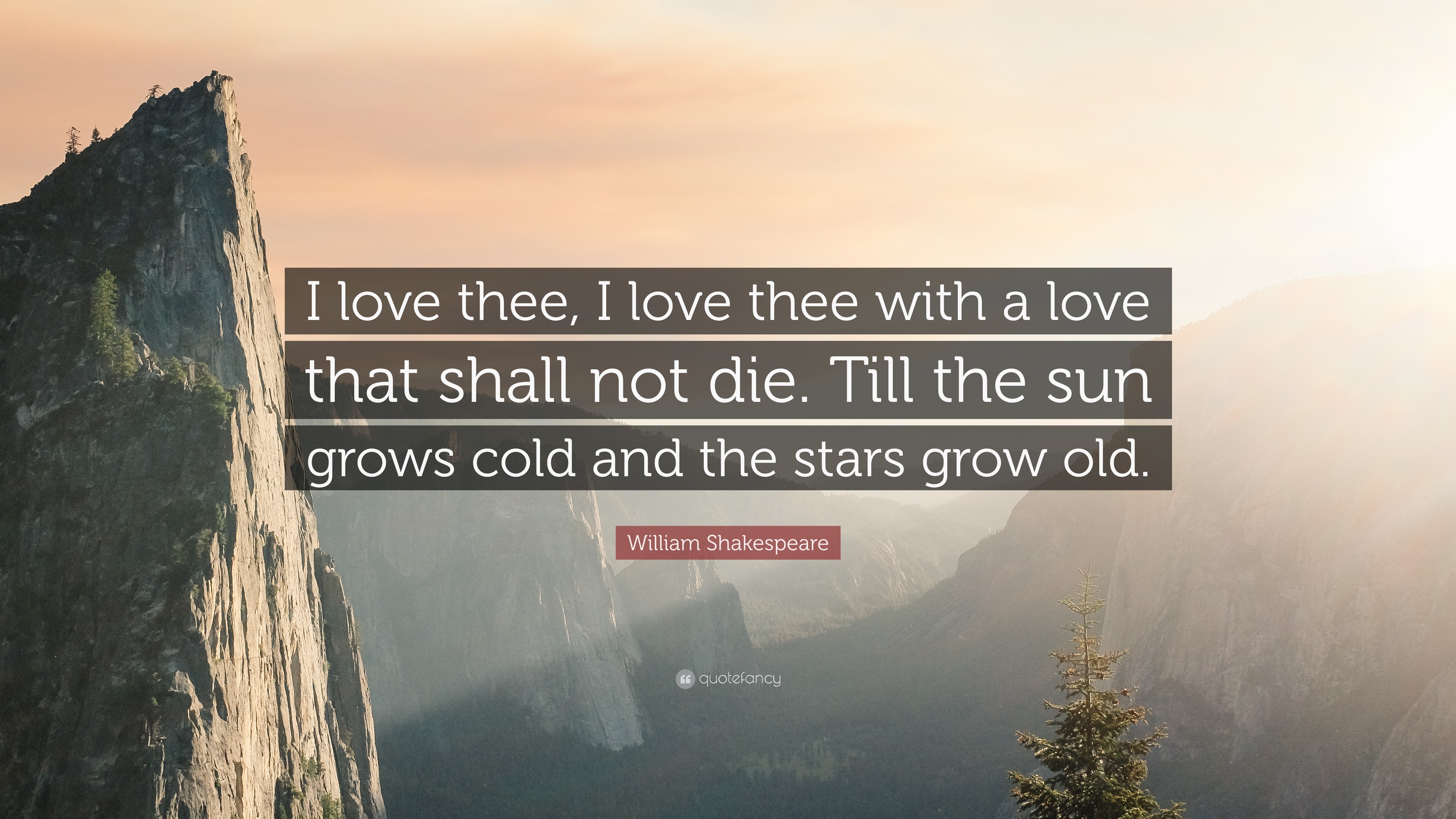



William Shakespeare Quote I Love Thee I Love Thee With A Love That Shall Not Die




The Analysis Of Poem How Do I Love Thee Let Me Count The Ways A Cup Of Hot Chocolate
It is an everfixed mark that looks on tempests and is never shaken it is the star to every wandering bark, Whose worth's unknown, although his height be takenIs again a sonnet of love but is of a love that is present and hopefully will remain forever The third poem that will be examined is When We Two Parted which tells of a lost secret love that has left aLet me count the ways I love thee to the depth and breadth and height My soul can reach, when feeling out of sight For the ends of being and ideal grace I love thee to the level of every day's Most quiet need, by sun and candlelight I love thee freely, as men strive for right;




32 Shakespeare Quotes About Love And Marriage Cialis Samples How To Get Cialis For Free Love Archives Mine For The Making Love Quotes Daily Leading Love Relationship Quotes Sayings Collections




How Do I Love Thee Let Me Count The Ways Sonnets From The Portuguese 43 Poem Summary And Analysis Litcharts
Compare and Contrast two sonnets by Shakespeare 'Shall I compare thee' and 'My mistresses eyes' Words 974 Pages 4 Sonnets 18, 116 and 130 Words 7 Pages 3;One of Elizabeth Browning's most well known poems recited by Helen DemetriouAnd, if God choose, I shall but love thee




Sonnet 141 In Faith I Do Not Love Thee Poem Analysis
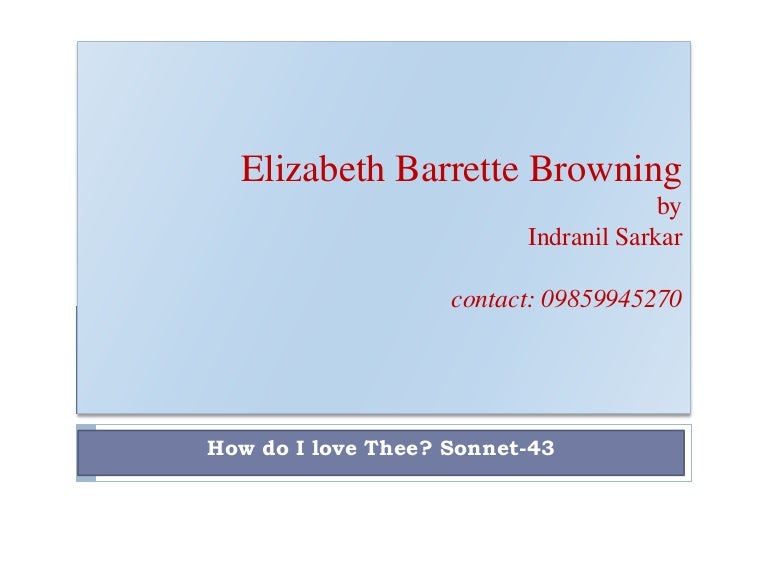



Sonnet 43 How Do I Love Thee By Elizabeth Barrette Browning
Feb 02, 21 · Benedick and Beatrice, everybody's favorite Shakespearean couple, provide us with a few of the most romantic lines in Shakespeare See also "I love you with so much of my heart that none is left to protest" (), and "I will live in thy heart, die inAbout Press Copyright Contact us Creators Advertise Developers Terms Privacy Policy & Safety How works Test new features Press Copyright Contact us CreatorsI love thee to the depth and breadth and height My soul can reach, when feeling out of sight For the ends of being and ideal grace I love thee to the level of every day's Most quiet need, by sun and candlelight I love thee freely, as men strive for right;




I Love Thee Home Decor At Belleandjune



I Love Thee I Love Thee With A Love That Shall Not Die Till Picture Quotes
Oct 26, 18 · The question is simply, "How do I love thee?" The answer involves seven different aspects of love, all of which are part of Elizabeth's feelingMay 18, · Study Guide for Sonnet 43 (How do I love thee?May 23, 12 · By using the famous phrase "how do I love thee?" by William Shakespeare, gives it that old traditional feel, also with it having many references to religion, such as 'if God choose, faith and praise', this makes the poem sound old fashioned as religion was very important to people back then However, Hour is a very contemporary poem




How Do I Love Thee




Sonnets From The Portuguese Wikipedia
Lines 79 These lines use anaphora, beginning with the same phrase, "I love thee," as do lines two, five, and eleven This parallel structure emphasizes that the poem is in many ways a catalog or list of ways of loving, rather than an extended argument or scene like some other poems"How do I love thee?ROM the Desert I come to thee On a stallion shod with fire;
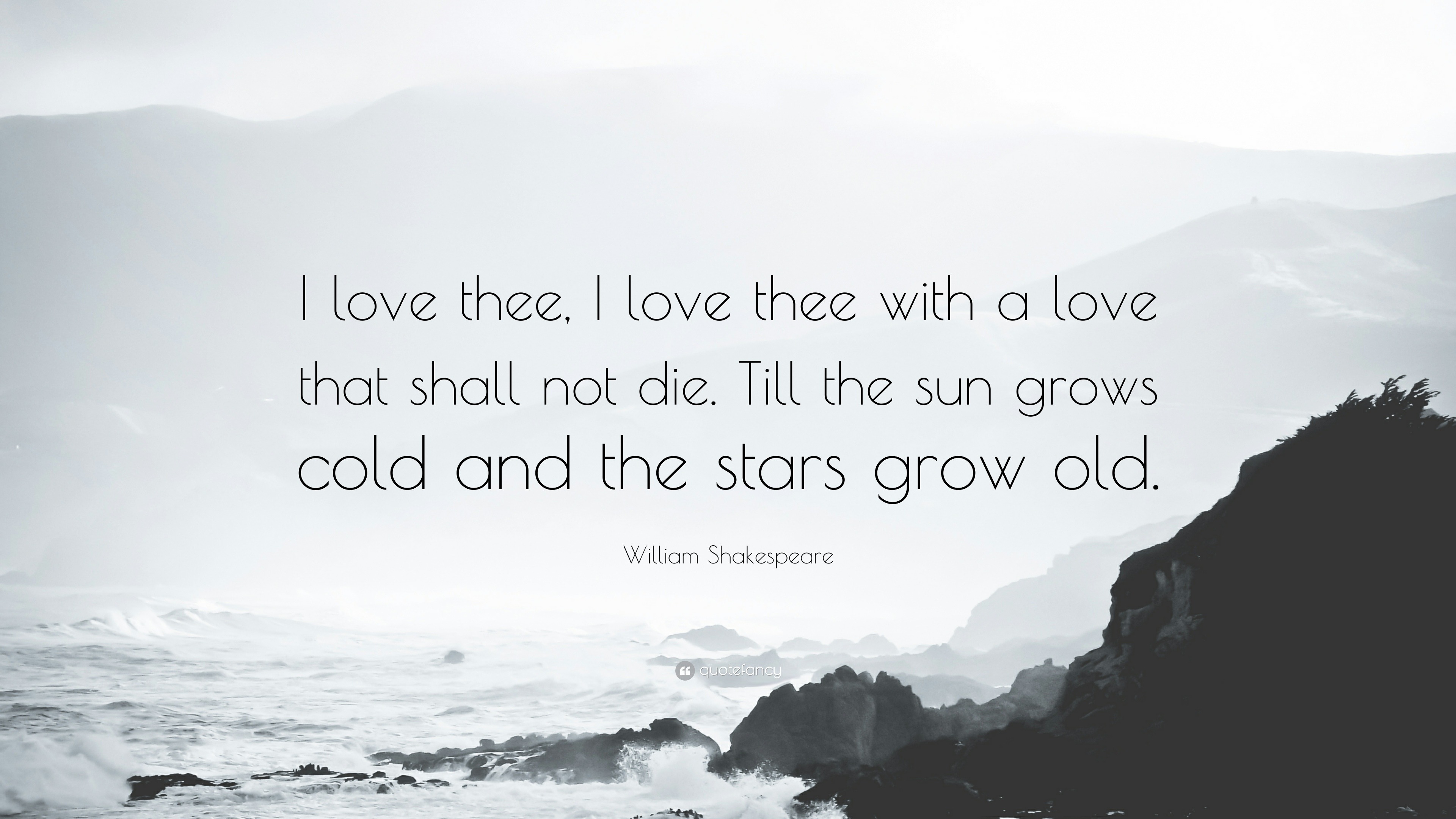



William Shakespeare Quote I Love Thee I Love Thee With A Love That Shall Not Die




What Made Me Love Thee Inspirational Quote By William Shakespeare
In Sonnet 43 repetition of the phrase "I love thee" reinforces the theme of unwavering love every time the reader hears it In Sonnet 18 the reinforcement of how beautiful the summer time is shows Shakespeare's love for this woman The diction that Barrett uses makes it easier to see the imagery in the poem The diction that ShakespeareOct 10, 19 · Shakespeare's Techniques Beyond Plot Titania's refusal to obey Oberon is based on her loyalty to another woman—just like the sisterly bond between Hermia and Helena that is challenged by the male suitors Shakespeare's tools of the block to love and friends to lovers work in this part of the plot as wellMay 21, 13 · Though I do want the blond guy's long hair and her glasses So there you have it, next time I ask myself "Urban Legend, how do I love thee, let me count the ways," I can say with some certainty that I love it in at least seventeen different ways Out




Love Thee Shakespeare Greeting Card




Top William Shakespeare Love Quotes Allwording Com
Feb 01, 18 · It is the love one feels for his family, and friends In dealing with the theme of love, both poems reference the beauty of their emotions, and the everlasting nature of such beauty Barrette's "How Do Love Thee" follows the structure of a Patriarchal sonnet, and is therefore written in iambic pentameterLet me count the ways) Sonnet 43 (How do I love thee?Shall I Compare Thee




I Love Thee I Love Thee Romeo Juliet Shakespeare Love Quote Metal Print By Immortallongings Society6




How Do I Love Thee Docx Sonnets Robert Browning
Dec 07, 19 · The ideas expressed by Shakespeare and Browning are still relevant today Love is not a tangible thing;Apr 14, 17 · I love thee in depth and breadth and height My soul can reach, when feeling out of sight For the ends of being and ideal grace I love thee to the level of everyday's" The author strays from the traditional Shakespearean sonnet structure by using a abbaabba ryme scheme that shortens the amount of rhyme within the poemHow do I love thee?




Amazon Com Classic Love Poems Audible Audio Edition William Shakespeare Edgar Allan Poe Elizabeth Barrett Browning Richard Armitage Audible Studios Audible Audiobooks



100 Short Romantic Quote By William Shakespeare About Love Stars Sun For Whatsapp Dp Status Instagram Story Facebook Post 614x414 21
And the winds are left behind In the speed of my desire Under thy window I stand, And the midnight hears my cry I love thee, I love but thee, With a love that shall not die Till the sun grows cold, And the stars are old, And the leaves of the Judgment Book Unfold!May 09, · 14 "I love thee with a love I seemed to lose" is an example of metonymy alliteration hyperbole synecdoche 15 The phrase "lost saints" likely refers to lost faith in religious or important figures in the speaker's life saints who passed away historical figures who died in warShakespeare Love Sonnets Words 1227 Pages 5;




Analysis Of Poem How Do I Love Thee By Elizabeth Barrett Browning Owlcation




How Do I Love Thee Sonnet 43 By Elizabeth Barrett Browning Poems Poets Org
And, if God choose, I shall but love theeSometime too hot the eye of heaven shines, And often is his gold complexion dimm'd;Let me count the ways I love thee to the depth and breadth and height My soul can reach, when feeling out of sight For the ends of being and ideal grace I love thee to the level of every day's Most quiet need, by sun and candlelight I love thee freely, as men strive for right I love thee purely, as they turn from praise I love thee with the passion put to use In my old griefs, and with my childhood's faith I love thee



How Do I Love Thee Rhyme Scheme



William Shakespeare Quotes Quotehd
Ans The various figures of speech used in Sonnet 43 are described as follows Anaphora The main figure of speech in the poem is anaphora— the use of I love thee in eight lines and I shall but love thee in the final line This repetition produces rhythm thusSonnet 130 shows realistic love and 'Shall I compare thee' shows romantic love Both poems are concluded with a rhyming couplet Both couplets are positive and describe his love for his lovers' 'Shall I compare thee' says that love is eternal and will live beyond anything else(b) I love thee purely, as they turn from praise (a) I love thee with the passion put to use (c) In my old griefs, and with my childhood's faith (d) I love thee with a love I seemed to lose (c) With my




Poetry Analysis On How Do I Love Thee And Sonnet Xviii Free Essay Example



The Universal Theme Of Eternal Transcending Love In Sonnet Xviii By Shakespeare And How Do I Love Thee By Elizabeth Barrett Browning Kibin




Shakespear E And Elizabethan Theatre William Shakespeare 0




How Do I Love Thee Sonnet 43 By Elizabeth Barrett Browning Poems For Children Freeschool Youtube




Hate Poem Example Shakespeare Shall I Compare Thee




Sonnet 141 In Faith I Do Not Love Thee With Mine Eyes Youtube
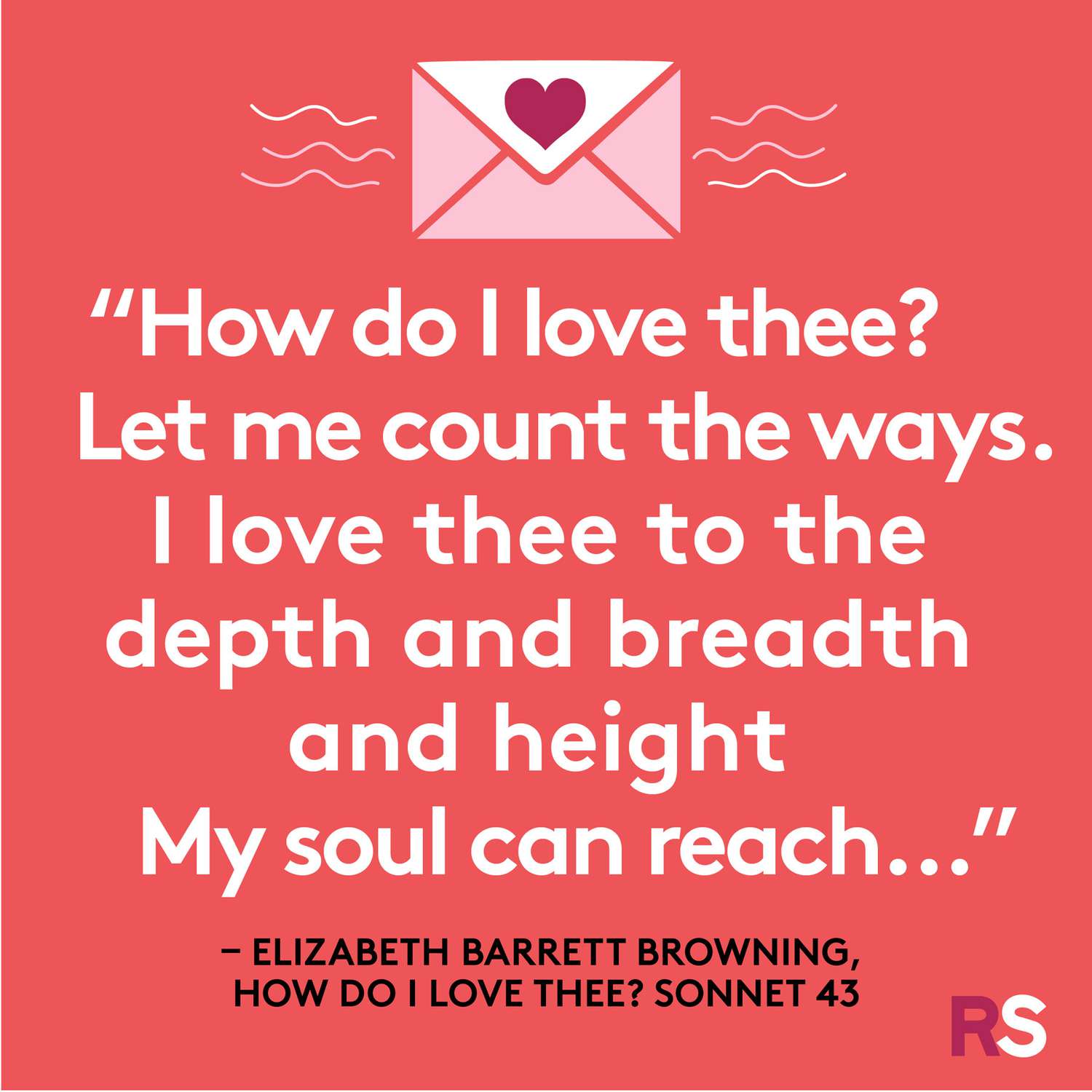



Love Quotes 41 Of The Best Quotes About Love Real Simple



I Love Thee William Shakespeare Elizabeth Cotton
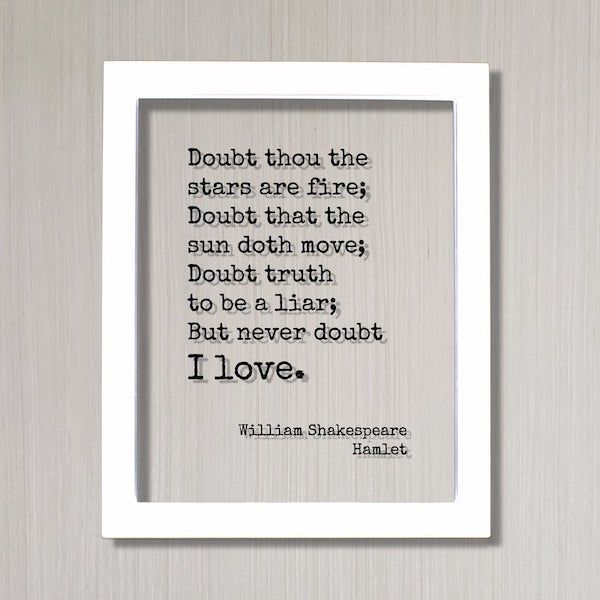



30 Shakespeare Love Quotes To Use In Weddings Speeches And Letters




Sonnet 43 Poetry Prof



Love Thee Shakespeare Quotes Top 2 Quotes About Love Thee Shakespeare From Famous Authors




Best Love Quotes By Shakespeare Uplift Life Quotes
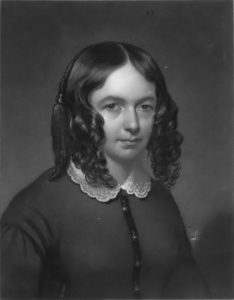



How Do I Love Thee By Elizabeth Barrett Browning Sonnet Composition And Literature




Types Of Poetry Ppt Video Online Download
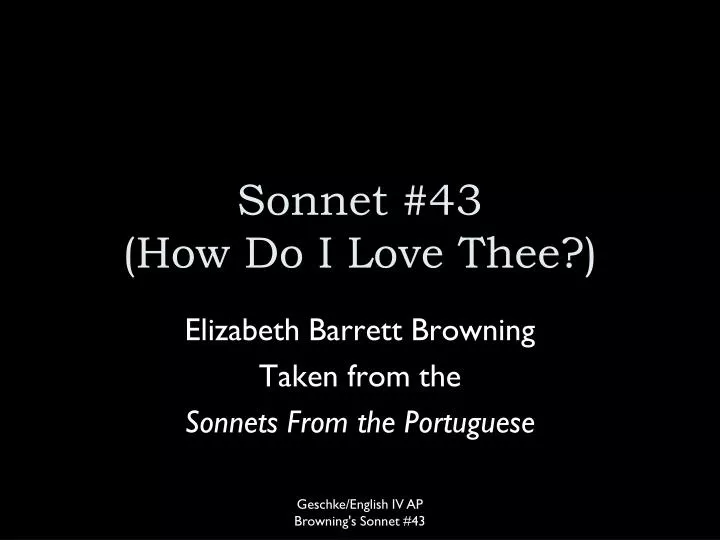



Ppt Sonnet 43 How Do I Love Thee Powerpoint Presentation Free Download Id



Analysis Of Sonnet 43 How Do I Love Thee By Elizabeth Barrett Browning Gcse English Marked By Teachers Com
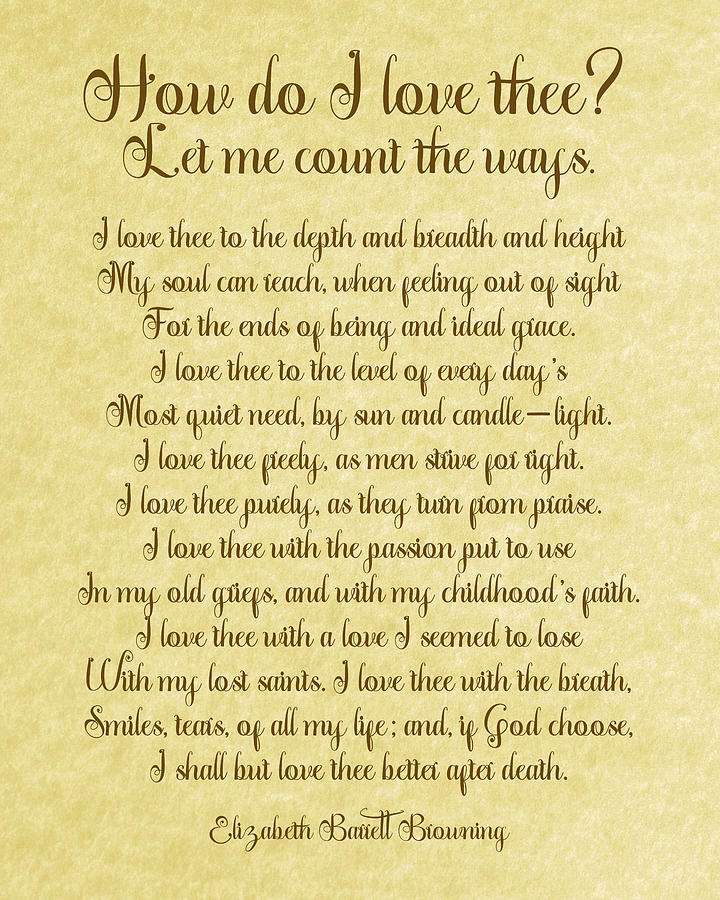



How Do I Love Thee Poem Buff Parchment Digital Art By Ginny Gaura




William Shakespeare Quote I Love Thee I Love Thee With A Love That Shall Not Die
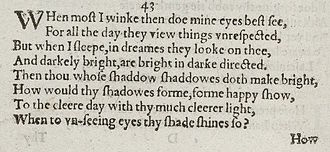



Sonnet 43 Wikipedia
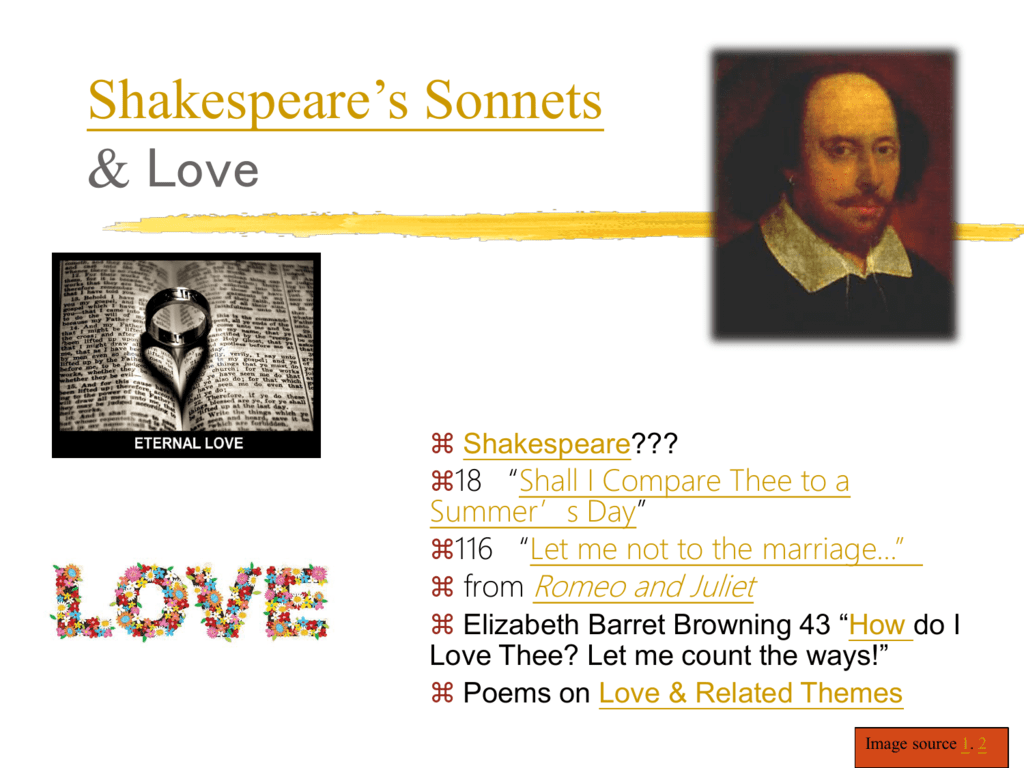



Shall I Compare Thee To A Summer S Day
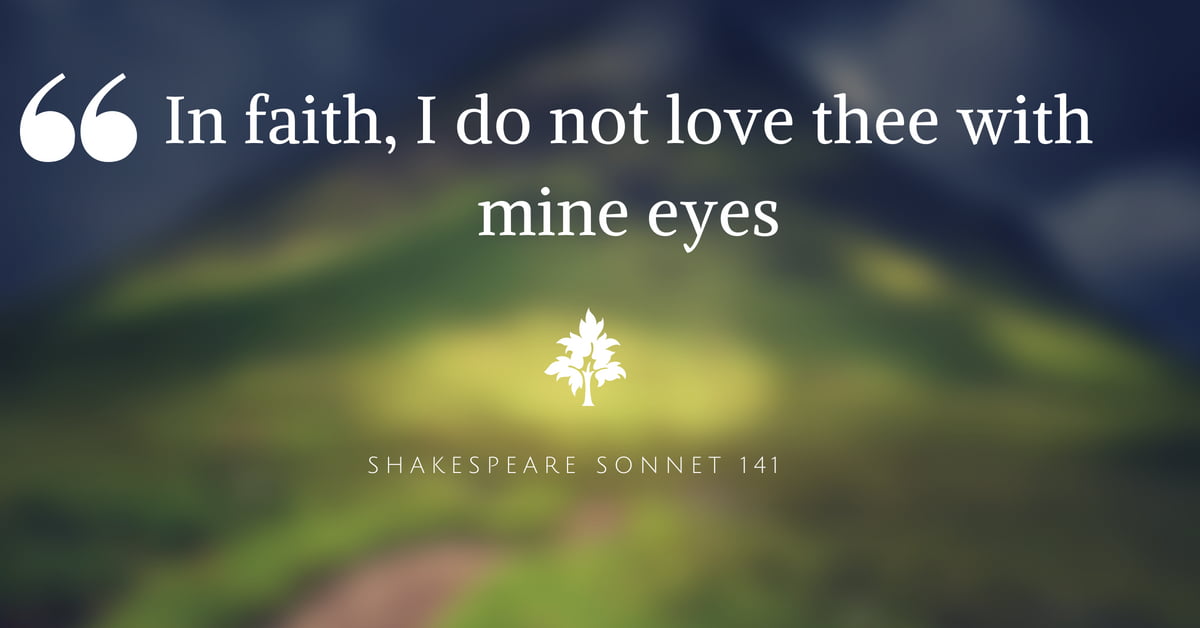



Shakespeare Sonnet 141 Analysis In Faith I Do Not Love Thee




Pin By Steph Konrady On Art Music Writing Cinema Love Poems Poems Beautiful Poem Quotes
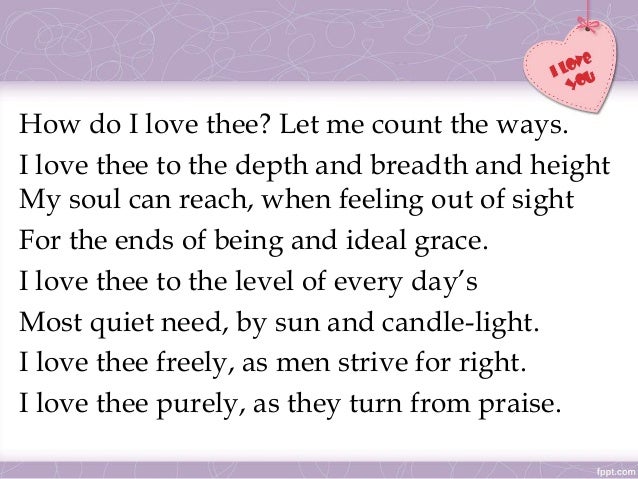



How Do I Love Thee




Sonnet 141 In Faith I Do Not Love Thee With Poetry Foundation




How Do I Love Thee Docx Sonnets Robert Browning




How Do I Love Thee Let Me Count The Ways Shakespeare Geek The Original Shakespeare Blog



What Made Me Love Thee Let That Persuade Thee There S Picture Quotes
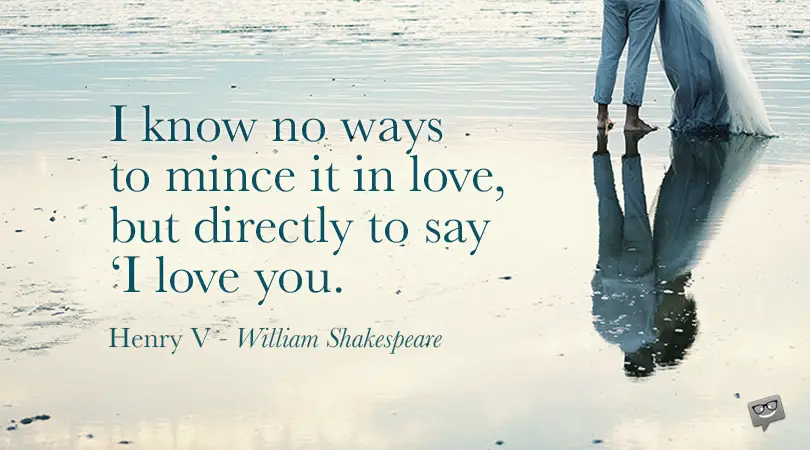



Shakespeare Love Quotes Shall I Compare Thee To A Summer S Day




How Do I Love Thee




How Do I Love Thee Analysis Essay Example
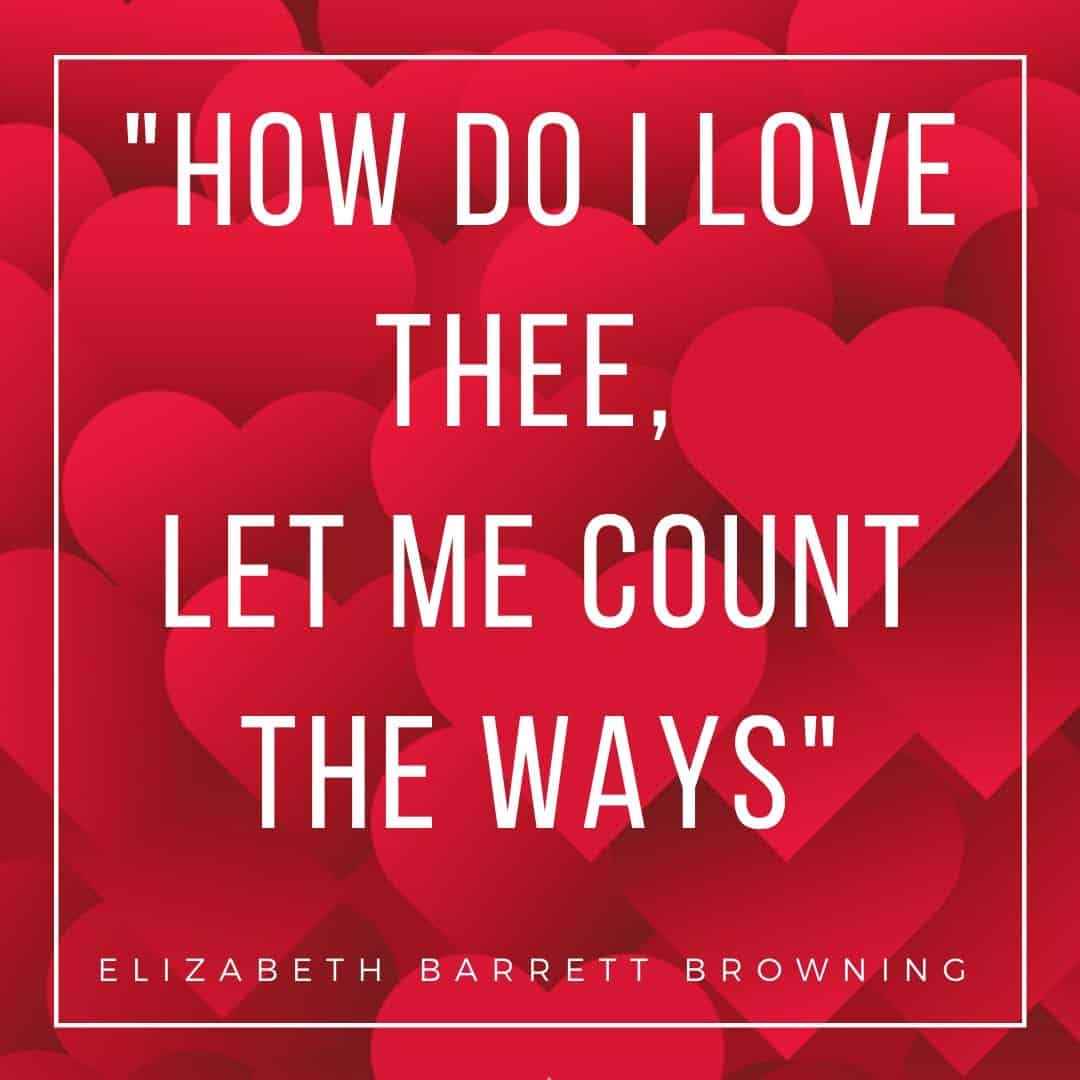



How Do I Love Thee Let Me Count The Ways Sonnet Analysis




Sonnet 43 How Do I Love Thee By Elizabeth Barrette Browning
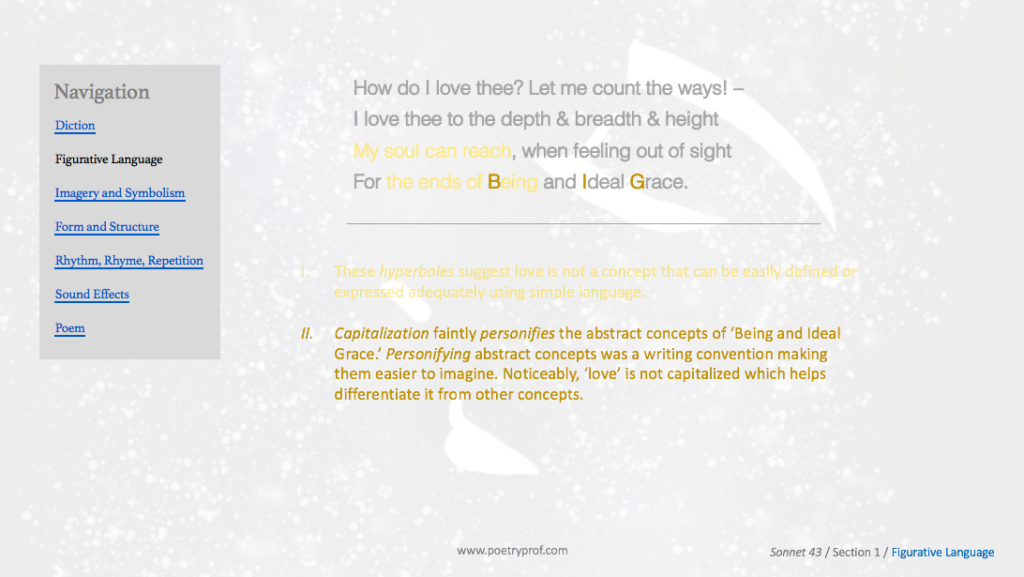



Sonnet 43 Poetry Prof
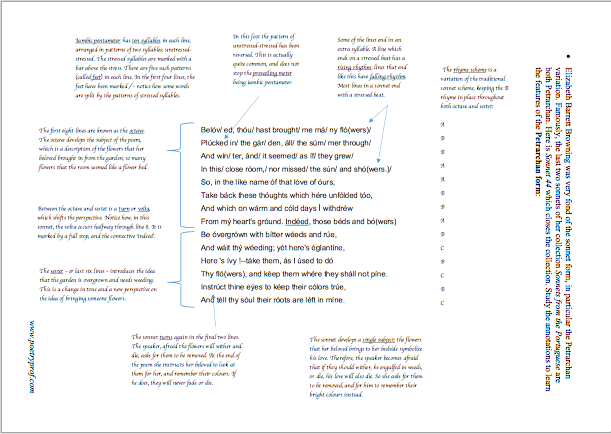



Sonnet 43 Poetry Prof
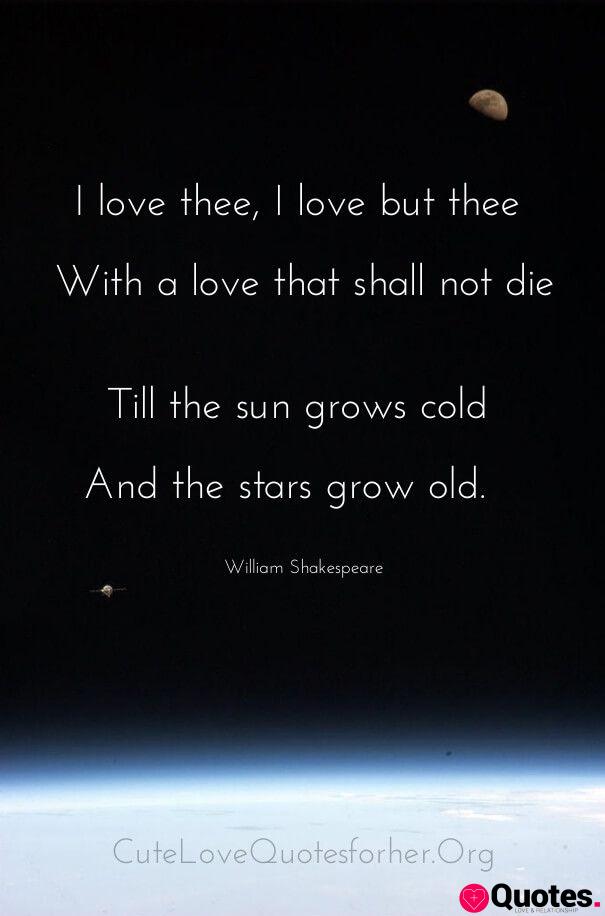



32 Shakespeare Quotes About Unrequited Love Shakespeare Love Quotes And Poems Quotesgram Love Quotes Daily Leading Love Relationship Quotes Sayings Collections
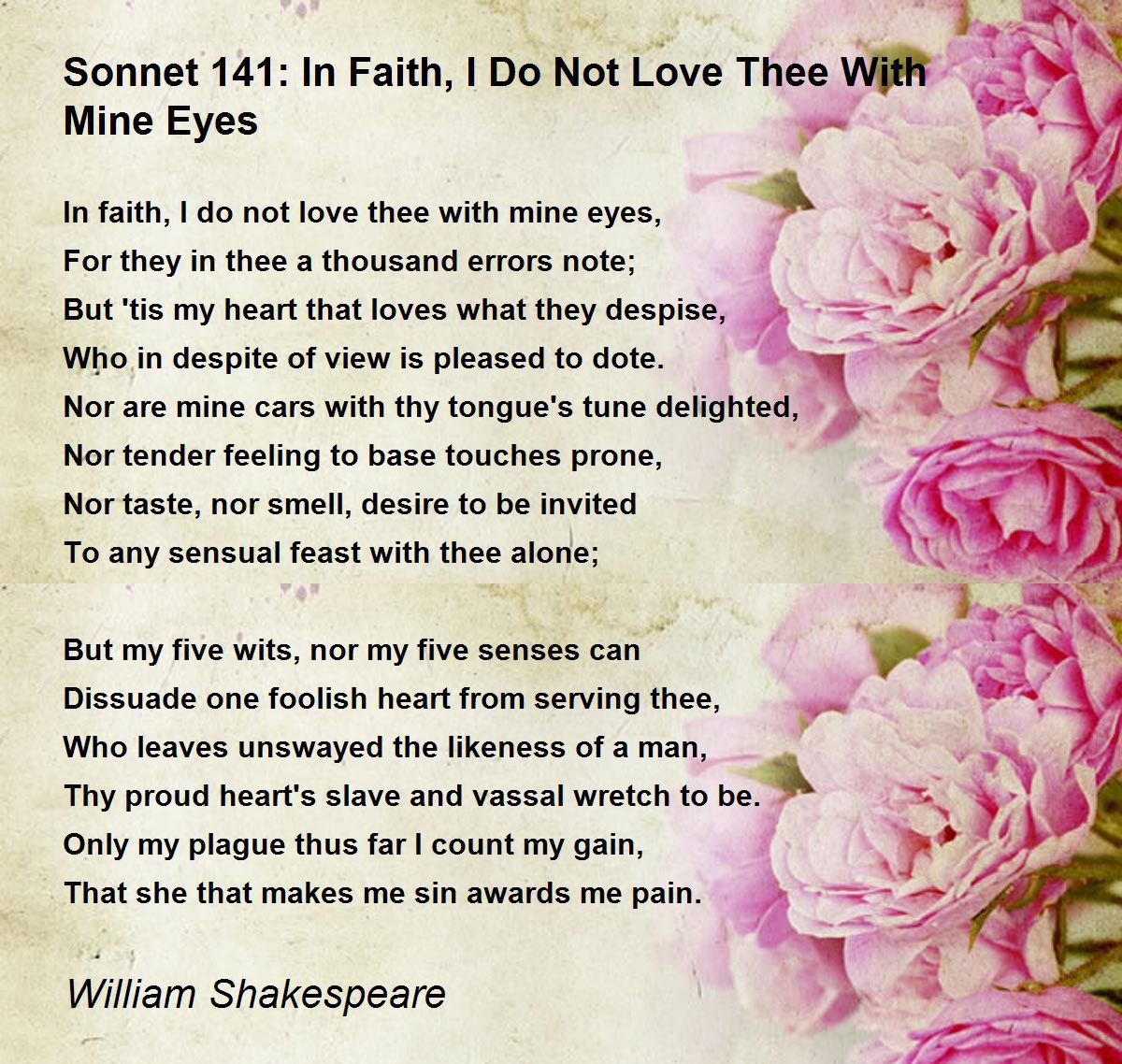



Sonnet 141 In Faith I Do Not Love Thee With Mine Eyes Poem By William Shakespeare Poem Hunter




I Love Thee I Love Thee Romeo Juliet Shakespeare Love Quote Iphone Skin By Immortallongings Society6



How Do I Love Thee Sonnet 43 National Poetry Day




I Love Thee With A Love That Shall Not Die By William Shakespeare Shakespeare Love Quotes Famous Shakespeare Quotes William Shakespeare Quotes




Oh Shakespeare How Do I Love Thee Bucket List Publications




How Do I Love Thee Poem By Elizabeth Barrett Browning Sonnet 43 Youtube




Shakespeare S Sonnet 141 In Faith I Do Not Love Thee With Mine Eyes




Pin On Love Quotes Poetry




I Love Thee I Love Thee With A Love That Shall Not Die Till The Sun Grows Cold And The Stars Grow Old William Shakespeare
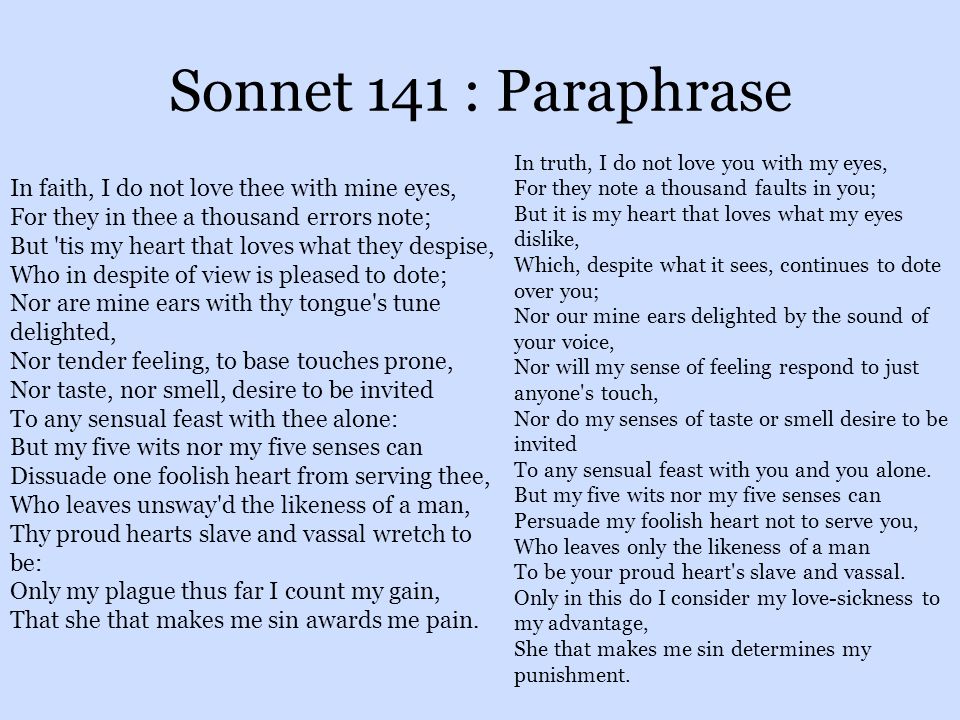



Sonnet Wrap Up Ppt Download




Pin On Wedding Ideas For S K




How Do I Love Thee Let Me Count The Ways Sonnets From The Portuguese 43 Poem Summary And Analysis Litcharts




How Can Shakespeare S Shall I Compare Thee To A Summer S Day Be A Love Poem In Blazing India




Elizabeth Barrett Browning How Do I Love Thee Sonnet 43 Genius




Sonnet 43 How Do I Love Thee Let Me Count The Ways Literary Elements Gradesaver
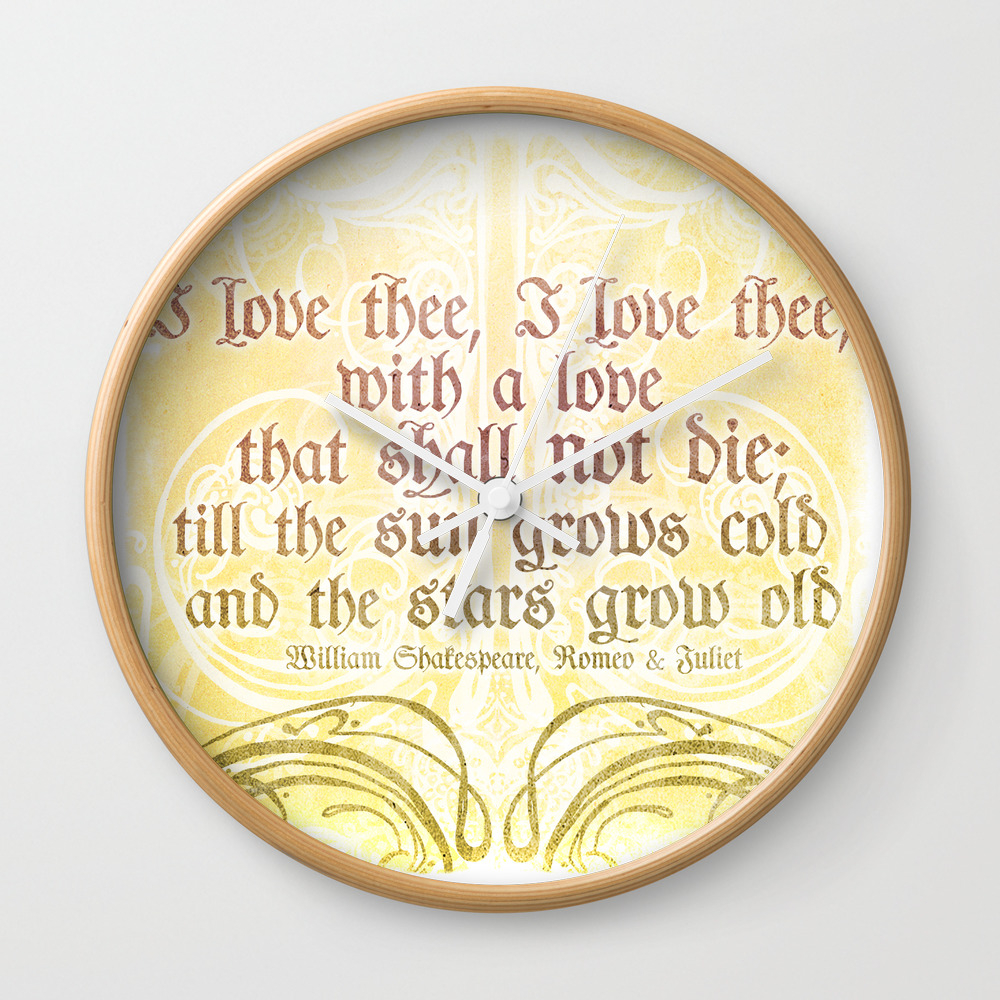



I Love Thee I Love Thee Romeo Juliet Shakespeare Love Quote Wall Clock By Immortallongings Society6




How Do I Love Thee Sonnet 43 Elizabeth Barrett Browning Text Lyrics Words Poetry Poem Verse Youtube




How Do I Love Thee Wilfred Owen British Poetry Wilfred Owen Poems
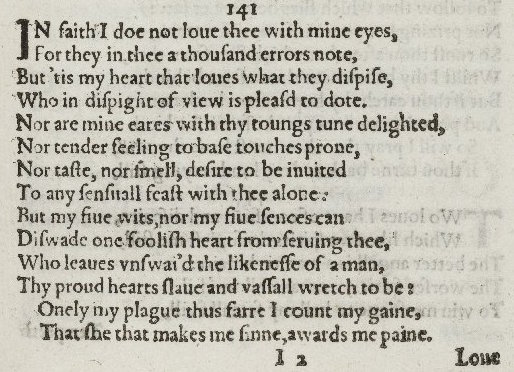



Sonnet 141 Wikipedia



Shakespeare S Sonnets
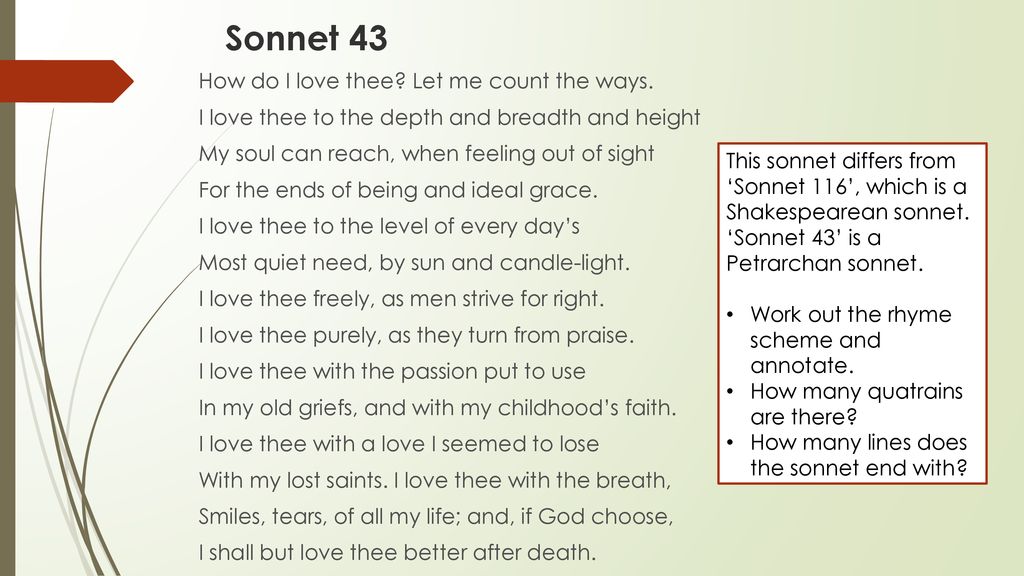



Sonnet 43 Sonnet 116 Elizabeth Barret Browning William Shakespeare Ppt Download
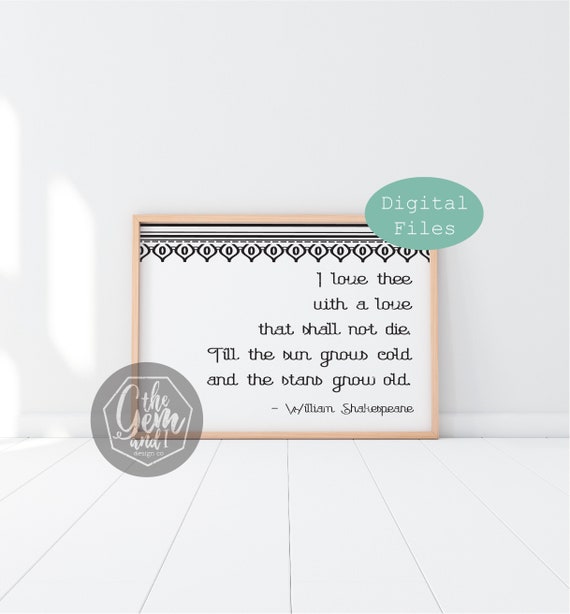



I Love Thee With A Love That Shall Not Die William Etsy




Pin On Poems For Weddings Anniversaries




Sonnet 18 Wikipedia



Shakespeare S Sonnet 141 In Faith I Do Not Love Thee With Mine Eyes Shakespeare Sonnet Readings




How Do I Love Thee Sonnet 43 National Poetry Day




Gcse Sonnet 43 How Do I Love Thee By Elizabeth Barrett Browning Poem And



0 件のコメント:
コメントを投稿